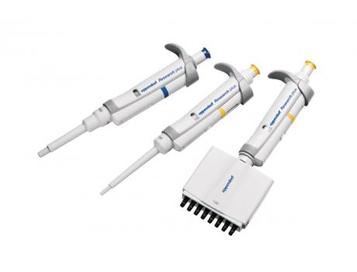Why Calibrate Pipettes?

Calibration Technology Ltd calibrate pipettes according to the standard EN ISO 8655 1-6:2002. This standard details the terminology, general requirements, user recommendations and protocols for the calibration of Piston Operated Volumetric Apparatus (POVA).
Every pipette is subject to a normal wear and tear. Faults may appear without notice at any time. Leaks and wear of moving parts cannot easily be determined/observed and may influence the result and lead to significant errors. Changes in environmental conditions (the main environmental conditions that affect pipette performance are temperature, humidity and atmospheric pressure) or the varied techniques of operation by different users may lead to deviations.
Regular calibration regimens should be implemented to ensure a minimisation of these faults. The calibration sequence calculates both the accuracy and precision. If the pipette is not within specifications it must be adjusted, damages will be recognised immediately and can be fixed at the same time.
Only by calibrating a pipette regularly, can its actual condition be identified and documented in a traceable way.
Every pipette is subject to a normal wear and tear. Faults may appear without notice at any time. Leaks and wear of moving parts cannot easily be determined/observed and may influence the result and lead to significant errors. Changes in environmental conditions (the main environmental conditions that affect pipette performance are temperature, humidity and atmospheric pressure) or the varied techniques of operation by different users may lead to deviations.
Regular calibration regimens should be implemented to ensure a minimisation of these faults. The calibration sequence calculates both the accuracy and precision. If the pipette is not within specifications it must be adjusted, damages will be recognised immediately and can be fixed at the same time.
Only by calibrating a pipette regularly, can its actual condition be identified and documented in a traceable way.

